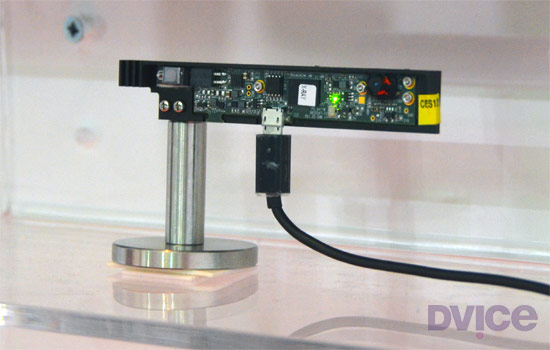
After creating the 3D sensor for the Xbox Kinect, PrimeSense has now introduced the world’s smallest 3D sensor that measures no more than a stick of chewing gum. The tiny 3D sensor is called Capri and PrimeSense has immensely reduced the dimension of the new device which is one tenth the size of its predecessor. The manufacturer has shrunk the size of Capri because they want to fit this sensor into both tablets and smartphones.
Talking about the new 3D sensing device, CEO of PrimSense, Inon Beracha noted that, “Using cutting-edge technologies, our newest generation of sensors is robust, accurate and affordable. With a mind-blowing size reduction, Capri’s size is about x10 smaller than the PrimeSense’s current generation of 3D sensors and it is certainly the smallest 3D sensor in the world.
Capri is small enough to fit into today’s most popular Smartphones while still providing the highest depth performance (short and long range). We see Capri adding depth sensing and Natural Interaction to numerous devices and markets, revolutionizing the user experience and usability in ways that no one could imagine until now”.
According to Cnet, Capri has the following features:
“Field of view 57.5×45
Range 0.8m to 3.5m
VGA depth map (640×480)
USB2.0 powered
Standard off-the-shelf components
OpenNI compliant”
In the light of the aforementioned details Capri seems to be a great innovation, but the IEEE thinks that perhaps it would not prove as useful as its predecessor Kinect sensor was because PrimeSense has not incorporated a RGB camera into the device. But keeping its size and unnecessary cost in mind the exclusion of RGB camera seems reasonable because otherwise it would have added complexities and size to the device.
Therefore, Capri should be considered just as a step on the road that leads to the 3D sensing future as well as applications in robotics because PrimeSense is looking to install this technology into different devices whether they are kitchen appliances, cars or any other product.
Source: Cnet
Photo: Dvice